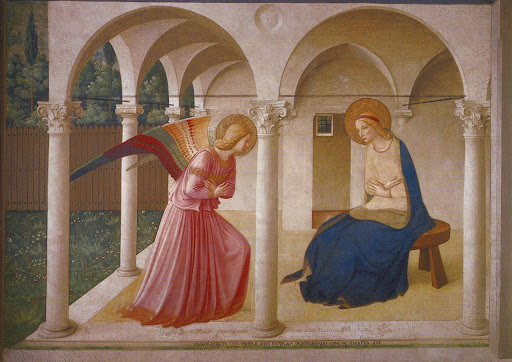The 25th of March is an important date for Catholics around the world as it celebrates the Annunciation of the Virgin Mary, the incarnation of Christ who is born nine months later on 25th December. But, what most people don’t know about, is that until 1582, throughout the medieval and Renaissance period in all of Europe, this was also the first day of the year. In Florence however, the 25th of March continued to be the first day of the year until 1750.
Due to slight imperfections by the Ancients in the calculation, by the time we arrive at 1582, the days and the seasons no longer corresponded. Pope Gregory XIII ordered the major astronomers, scientists and mathematicians of the day to readjust the calculation of the year. In order to create order in chaos, it was necessary that the 4th October be followed by the 15th October, also making the first day of the year the 1st January.
 |
| Detail of the tomb of Pope Gregory XIII (in St Peter’s Basilica) celebrating the introduction of the Gregorian Calendar |
Not everybody followed this new reform immediately. In fact, it took until the 1900’s to get everybody on the same page. Immediately after the papal bull was signed by the pope in 1582 the Protestants viewed it with suspicion and the poor viewed it as a cunning ruse on the part of the landowners to squeeze more rent money from them. In Florence the change of new year happened only in 1750 under the Grand Duke of Tuscany Francis Stefan (a plaque on the right hand wall of the Loggia dei Lanzi in the piazza Signoria reminds us of this). England followed soon after in 1752, the Bolsheviks in 1918 after the October revolution and Greece only in 1923!
Every year Florence continues to celebrate the traditional new year with a historical procession in costume in the afternoon which snakes through the centre finishing at the Santissima Annunziata church. Here the citizens of Florence pay homage to one of the city’s most venerated images of the Virgin Mary shown receiving the Holy Spirit along with the Archangel Gabriel.
 |
| Annunciation fresco by Friar Bartolomeo |
The news of this miracle spread like wildfire and since then it has been one of the most important spiritual images of the city and a major pilgrim site for Florentines.
| Basilica of Santissima Annunziata |





